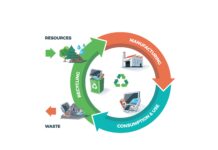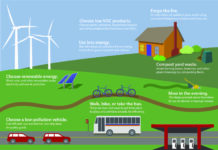The trend towards urbanization is rapidly increasing worldwide, with more people relocating to cities. However, this trend has severe implications for sustainability, as cities are the major contributors to greenhouse gas emissions and resource consumption. But with the growing awareness, it is now recognized that cities can also be a crucial part of the solution to environmental challenges. In this article, we will explore the latest trends in green urban planning and design and how they are helping to build sustainable cities.
The Importance of Sustainable Cities
Sustainable cities are critical for a sustainable future. The data shows that cities are responsible for approximately 70% of global greenhouse gas emissions and consume approximately two-thirds of the world’s energy. They also generate vast amounts of waste and consume significant amounts of water and other resources.
However, sustainable cities can also be part of the solution to these environmental challenges. By reducing greenhouse gas emissions, conserving resources, and promoting biodiversity, sustainable cities can help mitigate the impacts of climate change and protect the natural environment.
The Latest Trends in Green Urban Planning and Design
There are many trends in green urban planning and design that are helping to build sustainable cities. Here are some of the latest trends:
-
Sustainable Transportation
Sustainable transportation is a critical component of green urban planning and design. This includes promoting active transportation, such as walking and cycling, and investing in public transportation, such as buses and trains. Sustainable transportation can reduce greenhouse gas emissions, improve air quality, and promote healthy living.
-
Green Buildings
Green buildings are designed to be energy-efficient, water-efficient, and environmentally sustainable. They use renewable energy sources, such as solar power, and incorporate features such as green roofs and rainwater harvesting systems. Green buildings can reduce greenhouse gas emissions, conserve resources, and promote a healthy living environment.
-
Urban Agriculture
Urban agriculture involves growing food in urban areas, such as on rooftops or in community gardens. Urban agriculture can promote food security, reduce greenhouse gas emissions associated with transportation, and provide opportunities for community engagement.
-
Smart City Technology
Smart city technology involves using data and technology to improve city services and infrastructure. This can include sensors that monitor air quality and traffic, or apps that provide information about public transportation. Smart city technology can help to reduce greenhouse gas emissions, conserve resources, and improve the quality of life for city residents.
-
Green Infrastructure
Green infrastructure involves using natural systems, such as wetlands and green roofs, to manage stormwater runoff and improve water quality. Green infrastructure can also be used to promote biodiversity and improve air quality.
Examples of Sustainable Cities
Sustainable cities are not just a concept, but a reality. Many cities worldwide have embraced the importance of sustainability and have implemented green urban planning and design. Here are some of the most notable examples:
-
Copenhagen, Denmark
Copenhagen is widely regarded as one of the world’s most sustainable cities. The city has invested heavily in sustainable transportation, with over 60% of residents commuting by bicycle or public transportation. Copenhagen has also invested in green buildings, renewable energy sources and green infrastructure, making it a model for other cities looking to become more sustainable.
-
Singapore
Singapore has made significant efforts to become a sustainable city. The city has invested in public transportation, green buildings, and green spaces. Singapore has also implemented measures to conserve water and reduce waste, including a comprehensive recycling program.
-
Curitiba, Brazil
Curitiba is a city in Brazil that has been recognized for its innovative approach to sustainable urban planning. The city has invested in public transportation, green spaces, and recycling programs. Curitiba has also implemented measures to promote affordable housing and reduce social inequality.
-
Stockholm, Sweden
Stockholm has made significant efforts to become a sustainable city. The city has invested in sustainable transportation, green buildings, and renewable energy sources. Stockholm has also implemented measures to promote social equality, such as providing affordable housing and promoting gender equality.
-
Portland, Oregon
Portland is a city in the United States that has made significant efforts to become a sustainable city. The city has invested in sustainable transportation, including an extensive public transportation system and a network of bike lanes and paths. Portland has also implemented measures to promote green buildings and renewable energy sources, and has a comprehensive recycling program.
Challenges to Building Sustainable Cities
Building sustainable cities is not without its challenges. Here are some of the main challenges:
-
Funding
Investing in sustainable urban planning and design can be expensive, and funding can be a challenge. Many cities face budget constraints that make it difficult to invest in sustainable infrastructure and services.
-
Politics
Political factors can also pose challenges to building sustainable cities. There may be resistance to change from some groups, or disagreements about priorities and approaches to sustainable urban planning and design.
-
Infrastructure
The existing infrastructure in many cities may not be designed to support sustainable transportation or green buildings. Retrofitting existing infrastructure can be expensive and challenging.
-
Public Education
Public education is critical for building sustainable cities. However, many people may not be aware of the benefits of sustainable urban planning and design, or may not understand how to participate in sustainable practices.
Conclusion
Building sustainable cities is essential for a sustainable future. Sustainable cities can help to mitigate the impacts of climate change, conserve resources, and promote biodiversity. The latest trends in green urban planning and design, including sustainable transportation, green buildings, urban agriculture, smart city technology, and green infrastructure, provide hope for a more sustainable future.
While there are challenges to building sustainable cities, the examples of sustainable cities around the world demonstrate that sustainable urban planning and design is possible. By working together, individuals, governments, and organizations can overcome these challenges and build sustainable cities that benefit both people and the planet.
Google News | Telegram















